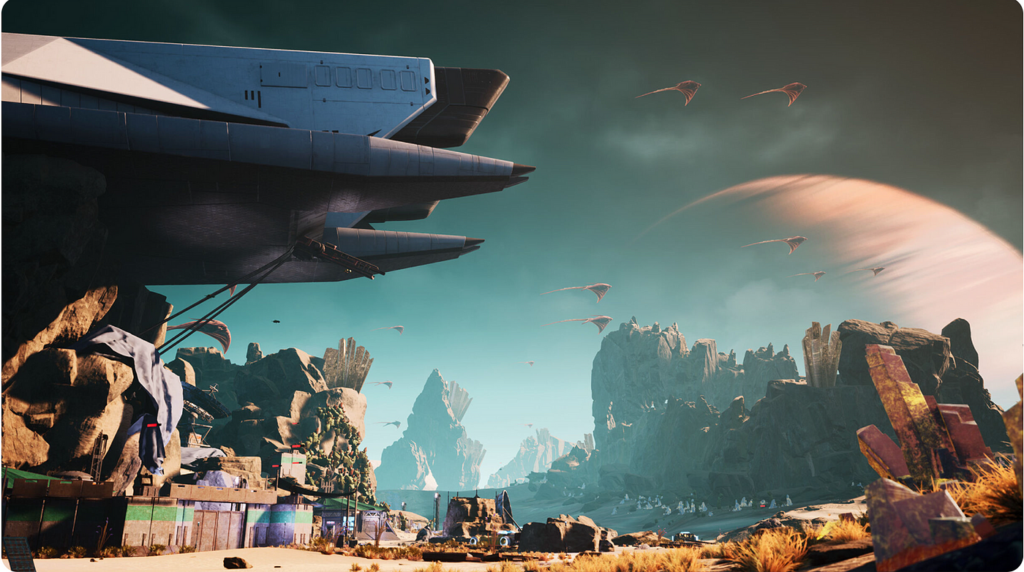
Absolutely! Here’s a full article-style write-up for:
🌀 Utilizing Procedural Generation to Create Infinite Game Worlds
Imagine a game world that never ends—one where every mountain range, dungeon, alien planet, or city skyline is unique, generated on the fly, and no two players explore exactly the same landscape. That’s the promise of procedural generation—a powerful technique used to create vast, dynamic, and infinitely replayable game worlds.
But procedural generation is more than just randomness. When used effectively, it becomes a tool for innovation, immersion, and scale—letting small teams build massive worlds and delivering experiences that feel both surprising and deliberate.
Let’s explore how procedural generation works, why it matters, and how to use it wisely in your game design.
🧠 What Is Procedural Generation?
Procedural generation (PG) is the algorithmic creation of game content using rules, parameters, and randomness instead of handcrafted design. Instead of building every level, terrain feature, or item manually, developers build systems that build the content for them.
Types of content you can generate procedurally:
- Terrain & landscapes
- Dungeons and maps
- Cities and architecture
- Quests and narrative branches
- Items and loot
- NPCs and dialogue
- Music and soundscapes
The key benefit: infinite variety, reduced dev time, and high replayability.
🌍 Why Use Procedural Generation?
✅ Infinite Worlds, Finite Resources
Small teams can build large-scale worlds without needing to model every mountain and design every cave manually.
✅ Emergent Gameplay
Procedural systems encourage players to explore, adapt, and experiment—resulting in emergent stories and strategies.
✅ Replay Value
No two runs are the same. Games like Hades, Minecraft, and No Man’s Sky thrive on variety and unpredictability.
✅ Creative Surprise (Even for Devs)
Procedural systems can produce results even designers didn’t expect—sparking new ideas and gameplay patterns.
🔧 How Procedural Generation Works
1. Seed-Based Randomization
A “seed” (a number or string) is used to generate a unique world that can be recreated using the same seed.
🌱 Example: Minecraft uses world seeds to create infinite terrain. Players can even share their seed with others.
2. Noise Functions (e.g., Perlin, Simplex)
Used to create natural-looking terrain, biomes, and organic patterns (like mountains, caves, rivers).
🌄 Example: Terraria uses noise and layering algorithms to form its sprawling 2D world.
3. Tile-Based or Modular Systems
Mix and match pre-built pieces in varying configurations.
🏰 Example: Spelunky uses handcrafted tiles to generate procedural levels that feel logical and challenging.
4. Grammar-Based Systems (for Stories & Quests)
Generate dialogue or quest chains using linguistic or rule-based systems.
🧙 Example: AI Dungeon and Dwarf Fortress use grammar trees to build complex storylines on the fly.
🕹️ Games That Use Procedural Generation (and Crush It)
| Game | Procedural Elements | Impact |
|---|---|---|
| Minecraft | Terrain, caves, biomes | Infinite sandbox exploration & survival |
| No Man’s Sky | Planets, lifeforms, ecosystems | Billions of unique planets & species |
| Hades | Room layouts, enemy patterns | Fresh, replayable roguelike runs |
| Spelunky | Level layouts, item spawns | Tight challenge & high replayability |
| Starbound | Planets, towns, quests | Space exploration with endless variety |
| Rogue Legacy | Dungeon generation | Dynamic challenge with persistent progression |
💡 Best Practices for Procedural Generation
🎯 1. Define Strong Rulesets
Random ≠ good. The magic lies in rules that produce coherent randomness.
📌 Tip: Set boundaries—like biome types, enemy themes, difficulty scaling, and story logic.
🧩 2. Combine Procedural with Handcrafted Design
Procedural worlds often benefit from a few fixed landmarks, scripted events, or narrative anchors to prevent sameness.
📌 Tip: Use handcrafted “set pieces” in a procedural world to add story depth and unique moments (e.g., temples in Zelda: Breath of the Wild).
🔄 3. Add Systems That React to the World
Make sure your AI, narrative, or environment systems adapt to what’s generated.
📌 Tip: If a dungeon spawns with more traps, NPCs could warn the player, or better loot could appear to match the danger.
🎨 4. Ensure Variety With Meaningful Differences
Visual variety is great, but combine it with gameplay variation—different enemies, puzzles, movement, strategies.
📌 Tip: Change how players interact with the world—not just how it looks.
🧪 5. Playtest, Tweak, and Tune
Procedural systems can produce junk, dead ends, or unfair challenges. You’ll need lots of testing and “fail safes.”
📌 Tip: Add filters and logic checks to prevent unplayable or broken results.
🧠 Advanced Concepts in Procedural Design
- Simulated Ecosystems: Weather, animal migration, seasons (Dwarf Fortress, Don’t Starve)
- Narrative Webs: Emergent relationship systems like Nemesis AI (Shadow of Mordor)
- Dynamic Difficulty: Scaling world elements based on player performance
- Player-Driven Evolution: Let the world change based on player actions (e.g., cities expand, biomes change, factions shift)
✍️ Final Thought
Procedural generation is more than a tech trick—it’s a creative philosophy. It lets designers hand over part of the worldbuilding to algorithms and to the players themselves, inviting infinite discovery, emergent storytelling, and replayability without repetition.
When done right, a procedurally generated world doesn’t feel random—it feels alive.
Looking to implement procedural generation in your game? Whether you’re building sprawling planets or dungeons that think for themselves, I can help you design rulesets, systems, and story logic that make your world both endless and unforgettable. 🌌🧰